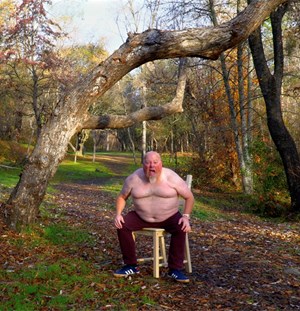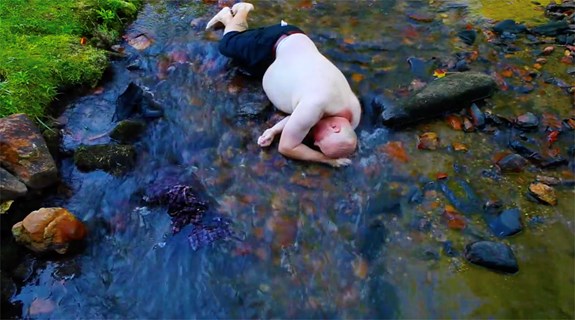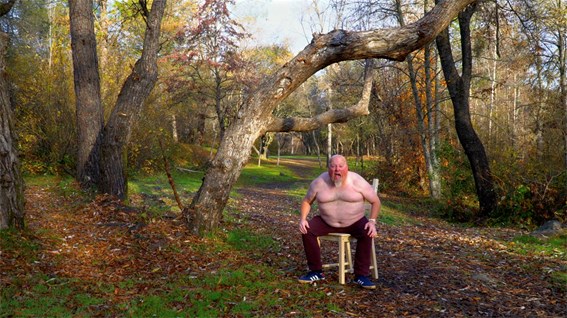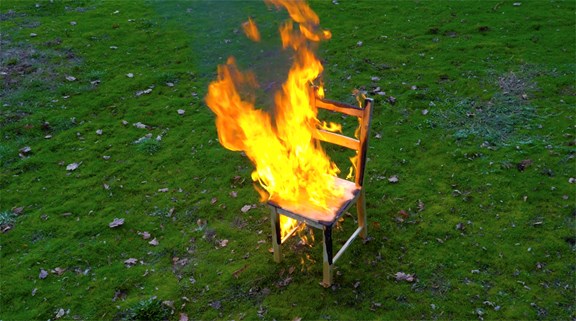
Kent Anderson Butler is a Los Angeles based artist working in a variety of mediums including video installation, performance and photography. "Currently, I am engaged in the exploration of the “human condition,” the “body” and the “spirit.” I am exploring the integration of how one can weave aspects of the “sacred”, the “environment” and the “body” within a contemporary cultural climate that increasingly ignores the invisible."
Image: Drowning with Land Still In Sight, Installation, 2016
Kent Anderson Butler is a Los Angeles based artist working in a variety of mediums including video installation, performance and photography. He has participated in solo and group exhibitions nationally and internationally including: ARTVENICE Biennale IV, hosted by the Biennial Project, The International Biennial of Contemporary Art, Venezuela, Coagula Curatorial, Museum of Art and History, Lancaster, LACE, California Museum of Photography, Perform Chinatown, Los Angeles, The Pasadena Museum of California Art, Fringe Exhibitions, Orange County Museum of Art, Cave Gallery, Brooklyn, NY, Amanda Harris Gallery of Contemporary Art, Las Vegas, Track 16 Gallery, Carl Berg Projects, Art Center College of Design, and Hunter College. His video work is also in the video art libraries at Pierogi Gallery in Brooklyn, NY, and Fringe Exhibitions.
Art Dependence (AD): Do you have any thoughts on whether that’s a responsibility of artists, reflecting our time is important within the political context?
Kent Anderson Butler (KAB): As an artist, I have a desire to create work that engages not just the contemporary art community, but contemporary culture as well. Reflecting on our time within the given political context is important for anyone, not just artists to respond to. There is so much going on in the world today that affects us as a contemporary culture and us as individuals. Art becomes an active voice of communication to allow people to see things and be woken up to things in a new way. Some artists including myself, have a strong desire to see art be used as a catalyst to transform people's thoughts about important issues in our world.
AD: What is your main interest as artist? What form of self-consciousness is applicable to the art-making?
KAB: I like to work in multiple mediums that include video, performance, installation, and photography. My work is concept driven and I am interested in creating work that is well crafted and at the same time engages and creates tension with the viewer. I also allow the work to be intuitive and no so driven by rules. I find that sometimes mistakes, failures and accidents while working on a particular piece, only allows the work to become stronger.

Searching, But No One Is Listening, video still, 2018
AD: Do you feel that it’s important to convey your own beliefs and opinions within your art? Is there a philosophical element in your work?
KAB: I do think that one’s own belief structure and world view does get conveyed in the art that a person creates weather or not it is directly intended or not because of the nature of who we are as individuals. For myself, I hold to a Christian belief structure and my faith is woven into the work I create, and at the same time, I am interested in creating work that engages multiple audiences and conceptually a lot the work I create has multiple layers and contexts.
AD: What are you currently working on? Is there anything in particular that you’d like to get across through your work?
KAB: Currently, I am engaged in the exploration of the “human condition,” the “body” and the “spirit.”
I am exploring the integration of how one can weave aspects of the “sacred”, the “environment” and the “body” within a contemporary cultural climate that increasingly ignores the invisible.
I have always been fascinated with the symbolism and use of metaphor which is used in Herman

Searching, But No One Is Listening, video still2, 2018
Melville’s Moby Dick and in the biblical narrative of Jonah and the Whale. The current body of work I am working on will involve a multi-channel video installation and a series of pieces surrounding the relationship between these two narratives and how both of them serve as reflections of tension, turmoil, grace and hope, that carry us as individuals and as a culture/society through the journey we are all on.
AD: What place does creativity have in education? Do you view yourself as a creator?
KAB: I truly believe in the importance of creativity and imagination in education. The Arts are essential in the educational process of an individual. As an artist-teacher, I share my professional experiences as an artist with my students. I strive to teach students how to integrate their own human condition and worldview with their art making practice. I often will pose the question to them, “What does it mean to and how do you take your personal convictions, worldview, thoughts and ideas and bring them out into an artwork that you are creating?” These questions are difficult and it is my hope that my students will have a better understanding of themselves and the world around them. I also want to challenge my students and prepare them for being out in the contemporary art world. It is important that they understand both historical and contemporary aspects of art, and understand the relationship between the visual arts and other disciplines. Collaborative and interdisciplinary practice are also important elements that I enjoy bringing into a class.
Yes, I do view myself as a creator, but not necessarily in the traditional sense of the word. Through my Christian lens, I see myself more as a co-creator because I believe that God's spirit is working through me and is the driving force for the work I create.
AD: Do you think that by challenging conventional views, art can truly make a change in the public’s perception?
KAB: I do believe that art can make change that can transform culture in the public's perception. Some artists react to culture and the pressing issues of the day. Art is used as a voice/communication tool to create dialogue and discussion between people and in some cases art can promote a sense of activism in order to reject injustice. There are more and more artists out there in the world who strive to change the world through the work they create.

Drowning with Land Still In Sight, Installation, 2016
AD: How has your work developed since you began and how do you see it evolving in the future?
KAB: Over the years my work from a conceptual framework has shifted from a personal narrative of who I am, to concerns about the issues that we as a contemporary culture are going through.
AD: Is sophistication, aesthetic accomplishment in the eye of the beholder?
KAB: Good question. For me, sophistication and aesthetic accomplishment is dependent upon the goals that I am striving for in my professional life as an artist. My views of accomplishment may be very different then the next person. I am blessed and proud to have accomplished so much as an artist and educator thus far in my life's journey and at the same time, I have goals in my life that I am still striving for and I look forward to the future and what lies ahead.
AD: What do you think is the social role of art? How would you like to be remembered?
KAB: I think art plays on many different roles in society and I believe art can change people’s perception and ideas about what is going on in society. Some people don't realize how powerful art can be and the voice that it has on individuals and culture as a whole.
When my life's journey is over, I would like to be remembered as a person of integrity, who loved God and others and an artist who created work from his soul that had an impact on the people who experienced my work. On a side note, it is my hope that my last art piece that I create will be a collaborative performative installation where my wife pours my ashes out on the floor of the Museum of modern Art.

Sacred Encounters Series, Rest, video still, 2015
AD: How does art school form ideas about art? Does it shape people into being certain types of artists?
KAB: I don't know if art school itself forms ideas about art, but the art faculty shape and mold students though an aesthetic pedagogy and that aesthetic pedagogy is unique and different within each art school. I would like to think that most art faculty encourage their students to create work that is true to who they are as individuals as opposed to creating work that is similar to their faculty mentors.
AD: What do you think about the art world and art market? Do you accept that art is inherently an elitist activity?
KAB: I think it is a very exciting time in the art world today. More and more opportunities are being created for artists to exhibit work especially in alternative places. More and more artists are getting their voice heard. I don't think art itself is an elitist activity, but I do get tired of seeing the same old blue-chip artists getting recognized. There are so many amazing artists out there in the world waiting to be discovered.
AD: What’s the last great book you read? Any other thoughts/projects to share?
KAB: I am in the process of reading Moby Dick right now for the research that I am doing on my next body of work. It is truly riveting and the symbolism and metaphors make me reflect where we are at in contemporary culture.
Thank you !

ArtDependence Magazine is an international magazine covering all spheres of contemporary art, as well as modern and classical art.
ArtDependence features the latest art news, highlighting interviews with today’s most influential artists, galleries, curators, collectors, fair directors and individuals at the axis of the arts.
The magazine also covers series of articles and reviews on critical art events, new publications and other foremost happenings in the art world.
If you would like to submit events or editorial content to ArtDependence Magazine, please feel free to reach the magazine via the contact page.